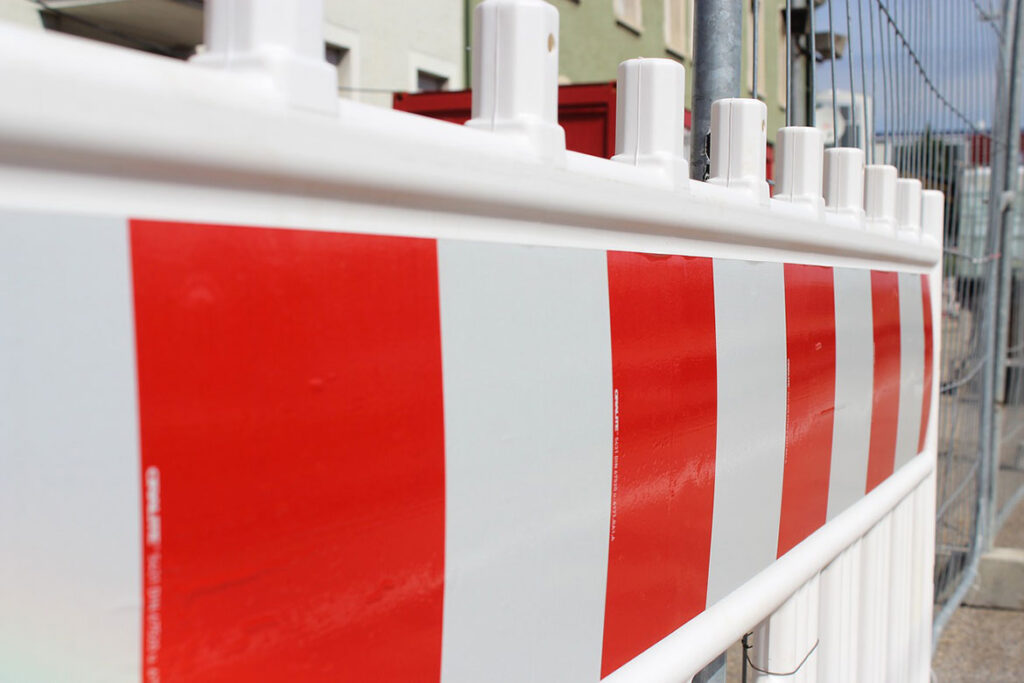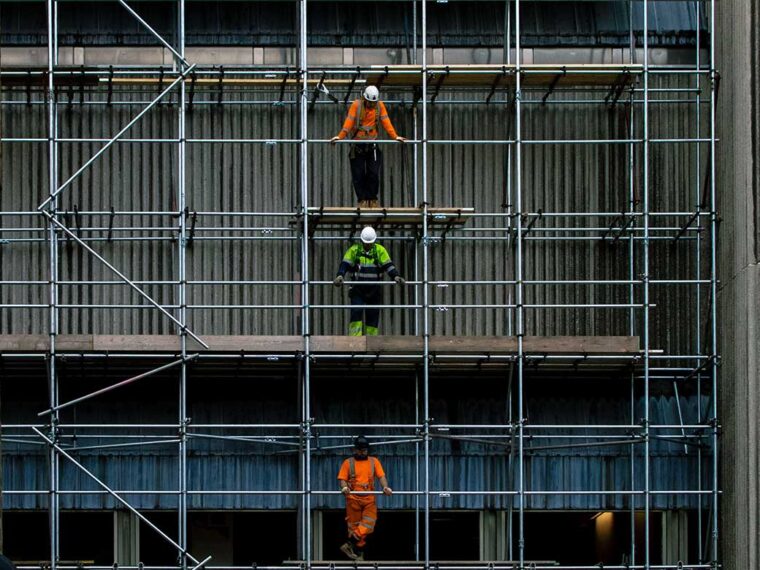In the bustling environment of a construction site, safety is paramount. Among the many elements that contribute to a secure work area, safety strips stand out as essential tools for protecting both workers and the overall project. This article delves into the importance, features, implementation, and maintenance of safety strips, ensuring you are equipped with the knowledge to enhance safety on your site.
Understanding the Importance of Safety Strips in Construction
Safety strips play a critical role in enhancing the safety measures on construction sites. By clearly marking hazardous areas, they serve as a visual cue for workers and visitors. The integration of safety strips can drastically reduce the likelihood of accidents, ensuring a more secure working environment.
Defining Safety Strips and Their Role in Construction
Safety strips are typically made from high-visibility materials and are designed to delineate danger zones, pathways, or equipment areas. They are often brightly colored—commonly in yellow, red, or orange—to immediately attract attention. Their primary role is to communicate risk areas, encouraging cautious behavior among workers and reducing the chances of accidents.
These strips can be applied to floors, walls, and even machinery to create a safer environment for everyone on site. The simple act of marking boundaries can profoundly influence behavior and promote a culture of safety. Additionally, safety strips can be combined with reflective materials, enhancing visibility in low-light conditions, which is particularly beneficial for night shifts or in poorly lit areas. This adaptability makes safety strips a versatile tool in the construction industry, capable of addressing various safety needs.

The Impact of Safety Strips on Worker Safety
The impact of using safety strips can be observed in numerous ways. Firstly, they help in creating a clear visual barrier, enabling workers to identify dangerous zones and maintain a safe distance. This awareness can lead to fewer injuries resulting from slip, trip, and fall incidents.
Moreover, implementing visible safety strips fosters a vigilant work culture. Workers are more likely to pay attention to safety measures when clearly outlined, leading to a reduction in accidents and an increase in overall efficiency. The correlation between a well-maintained safety protocol and a decrease in workplace incidents is compelling. Furthermore, the presence of safety strips can also serve as a reminder for regular safety training and compliance checks. When workers see these strips, they are prompted to reflect on their training and adhere to safety protocols, reinforcing the importance of continual education in maintaining a safe work environment.
In addition to their immediate safety benefits, safety strips can also contribute to the overall organization of a construction site. By clearly marking pathways and equipment zones, they help streamline operations, allowing for smoother navigation and reducing the potential for congestion. This organization not only enhances safety but also improves productivity, as workers can move efficiently without the distraction of unclear boundaries or hazardous areas. The strategic use of safety strips, therefore, is not just about preventing accidents; it is also about fostering an environment where safety and efficiency go hand in hand.
Key Features of Effective Safety Strips
When selecting safety strips for your construction site, it’s crucial to choose options that offer the best protection. Various features can enhance the effectiveness of these safety measures.
Material and Design Considerations
The materials used for safety strips must be durable and able to withstand the rigors of a construction environment. Options like vinyl or adhesive-backed tapes are popular because they provide strong adhesion and can endure wear and tear from foot traffic and machinery.
Design is also a significant factor. Bright colors and clear patterns not only improve visibility but may also incorporate reflective elements for low-light conditions. A thoughtfully designed safety strip blends functionality with aesthetic appeal, ensuring it stands out while fitting into the busy landscape of a construction site. Read more about elements on https://www.twinkl.com.pk/teaching-wiki/element
Visibility and Durability Factors
Visibility is crucial when it comes to safety strips. If workers do not see the strips, they cannot heed their warning. High-contrast colors, combined with reflective surfaces, are essential in ensuring the safety strips remain visible in various lighting conditions.
Additionally, durability cannot be overlooked. Safety strips should be resistant to chemicals, moisture, and extreme temperatures—conditions commonly found on construction sites. Investing in high-quality materials ensures that they remain functional over time and under challenging situations.
Implementing Safety Strips in Different Work Areas
Integrating safety strips across various work environments is essential for maximizing their effectiveness. Different areas may require unique applications based on the specific hazards present.
Safety Strips in High-Risk Areas
High-risk areas, such as around scaffolding, excavations, or heavy machinery, should be prioritized when implementing safety strips. Here, safety strips can delineate dangerous zones where only authorized personnel should enter.
Using contrasting colors to mark these boundaries helps ensure that all workers are aware of the potential dangers, which can significantly decrease the chances of accidental entry into hazardous areas.
Adapting Safety Strips for Various Construction Tasks
Every construction task has unique requirements. For instance, areas designated for material storage may need more robust strips to withstand heavy equipment movement. Meanwhile, pedestrian pathways should focus on ensuring visibility and preventing slipping. To read more about movement click here.
By customizing the application of safety strips according to the specific scenario, you can enhance safety measures effectively, catering to the unique characteristics of each task at hand. Flexibility in design and placement is critical for optimizing protection across the work environment.
Maintenance and Inspection of Safety Strips
To ensure the continued effectiveness of safety strips, regular maintenance and inspections are necessary. Over time, wear and damage can diminish their visibility and functionality.

Regular Check-ups for Optimal Functioning
Conducting frequent inspections helps identify any issues, such as peeling edges or fading colors. These checks should ideally be part of a larger safety audit, allowing for immediate repairs or replacements.
Establishing a routine maintenance schedule will ensure that safety strips remain in top condition, facilitating continual protection for workers and visitors on the construction site.
Repair and Replacement Strategies
When safety strips become damaged, timely repairs or replacements are crucial. Keeping a supply of extra strips on hand can expedite this process, ensuring that no area goes without proper marking for extended periods.
Additionally, training staff to identify when repairs are needed can foster a proactive approach to maintaining a safe work environment. Encouraging workers to report any issues with safety strips can help keep all areas marked correctly and effectively.
Legal and Industry Standards for Safety Strips
Beyond practicality, safety strips must also adhere to legal and industry standards. Compliance not only helps to avoid potential legal consequences but also ensures a higher level of safety for all involved.
Compliance with Occupational Safety and Health Regulations
Occupational Safety and Health Administration (OSHA) standards emphasize the importance of marking hazards clearly, including the use of safety strips where necessary. Compliance with these regulations is not just a legal obligation; it’s an ethical responsibility to protect those who work in construction.
Understanding your obligations under these laws can also inform the type of materials and designs you choose for your safety strips, ultimately contributing to a compliant and safer work environment.
Best Practices from the Construction Industry
Learning from industry best practices ensures that you are implementing the most effective safety measures. Many successful construction companies have comprehensive safety programs that include the strategic use of safety strips. These programs can provide valuable insights and guidelines to follow.
Staying informed about trends and innovations in safety measures can help keep your construction site at the forefront of safety practices, ultimately improving outcomes for everyone involved.
By understanding and implementing safety strips effectively on your construction site, you can enhance overall worker safety, comply with legal standards, and foster a culture of safety that protects all stakeholders. Remember: safety is not a one-time effort but a continuous commitment to improvement and vigilance.
Read more at: Reobar vs. Reobars

